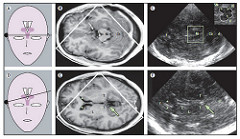Also known as sonography, ultrasound scanning generates images of tissues using a probe that emits high frequency sound waves through a special gel and “listens” for the sounds that bounce back–it’s a non-invasive technique that allows doctors to visualize body structures and make diagnoses. Ultrasound was first explored as a potential medical treatment in the 1930s. Today, it’s commonly used in various procedures like kidney stones resolving, cataract removal, and surgical tissue cutting. However, the treatment also poses some potential health risks. The sounds waves cause vibrations in local tissues that cause deep tissue heating, which can cause burns and trigger irreversible tissue changes if not monitored. Fortunately, this internal heating can also be used in cancer treatments by heating up tumors to around 42°C for an hour to slow their growth. Now, a research team led by Dr. Mark Bass at the University of Sheffield’s Department of Biomedical Science has discovered a new use for ultrasound–accelerating wound healing.
Image Source: Tim Hale
The ultrasound waves open up calcium channels in skin cell membranes, which attract other cells like fibroblasts, which are important in wound healing, to the wound site to increase healing capacity by up to 30%. The device decreases the risk of wound infection. According to Dr. Bass, “Because it is just speeding up the normal processes, the treatment doesn’t carry the risk of side effects that are often associated with drug treatments” (University of Sheffield). They especially observed that diabetic and elderly patients, who usually are slow to heal, were able to heal more from their wounds. In total, ultrasound healing could save an estimated £3.1 billion a year in physician operating costs. The team is currently researching ways to improve the effectiveness of ultrasound treatments.
Feature Image Source: ultrasound by Patrix
Feature Image Source: Update on Transcranial Sonography Applications in Movement Disorders by Journal of Diagnostic Imaging in Therapy










